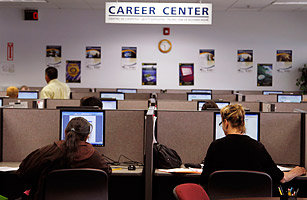
Highs: The unemployment rate actually fell for most of 2010, though not by much. In the first seven months of the year, the percent of jobless America workers dropped 0.5% to 9.5%, before rising again. For the many who remained out of work, unemployment insurance was extended in July, allowing those who had been without a paycheck for more than six months to continue to collect benefits in some states for nearly two years. The U.S. Census Office offered a rare boost to the unemployed when it hired 700,000 temporary workers in the first six months of 2010. As 2010 drew to a close, the White House and Republicans in Congress looked likely to strike a tax deal that would extend unemployment benefits through 2011.
Lows: In early March, there were nearly 16 million Americans out of work, at least 5 million more jobless than at the peak of any of the previous three recessions. What's more, out-of-work were staying that way for longer than any other recession since WWII. In October, the average unemployed worker had been out of a job for more than 8 months. And while the unemployment rate dropped, the broader measure of job market health, the so-called U-6 — which tracks those who are working part-time but would like to work full time, as well as those who had stopped looking for work — continued to climb to a recent 17%. Most economists predict the situation won't improve anytime soon. Many believe the jobless rate, currently at 9.8%, will remain above 8% for another two years.
—Stephen Gandel